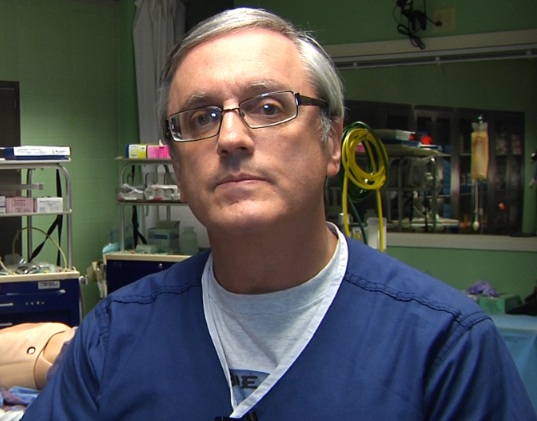Suspended-animation trials to begin on humans
Doctors will try to save the lives of 10 patients with knife or gunshot wounds by placing them in suspended animation, buying time to fix their injuries
NEITHER dead or alive, knife-wound or gunshot victims will be cooled down and placed in suspended animation later this month, as a groundbreaking emergency technique is tested out for the first time.
Surgeons are now on call at the UPMC Presbyterian Hospital in Pittsburgh, Pennsylvania, to perform the operation, which will buy doctors time to fix injuries that would otherwise be lethal.
“We are suspending life, but we don’t like to call it suspended animation because it sounds like science fiction,” says Samuel Tisherman, a surgeon at the hospital, who is leading the trial. “So we call it emergency preservation and resuscitation.”
The technique involves replacing all of a patient’s blood with a cold saline solution, which rapidly cools the body and stops almost all cellular activity. “If a patient comes to us two hours after dying you can’t bring them back to life. But if they’re dying and you suspend them, you have a chance to bring them back after their structural problems have been fixed,” says surgeon Peter Rhee at the University of Arizona in Tucson, who helped develop the technique.
The benefits of cooling, or induced hypothermia, have been known for decades. At normal body temperature – around 37 °C – cells need a regular oxygen supply to produce energy. When the heart stops beating, blood no longer carries oxygen to cells. Without oxygen the brain can only survive for about 5 minutes before the damage is irreversible.
However, at lower temperatures, cells need less oxygen because all chemical reactions slow down. This explains why people who fall into icy lakes can sometimes be revived more than half an hour after they have stopped breathing.
Just before heart and brain surgery, doctors sometimes lower body temperature using ice packs, and by circulating the blood through an external cooling system. This can give them up to 45 minutes in which to stop blood flow and perform surgery. However, the cooling process takes time and can only be done with careful planning and preparation.
When someone reaches an emergency department with a traumatic gunshot injury or stab wound, slow cooling isn’t an option. Often their heart has stopped beating due to extreme blood loss, giving doctors only minutes to stop the bleeding and restart the heart. Even if the bleeding can be stopped, it’s not like filling up an empty gas tank. Resuscitation exposes the body to a sudden onslaught of oxygen, which can cause tissues to release chemicals that damage cells and cause fatal “reperfusion” injuries.
Finding ways to cool the body until it reaches a state of suspended animation – where people are not alive but not yet dead – could give doctors more time in an emergency.
The technique was first demonstrated in pigs in 2000 by Rhee and his colleagues. The animals were sedated and a massive haemorrhage induced, to mimic the effect of multiple gunshot wounds. Their blood was drained and replaced by either a cold potassium or saline solution, rapidly cooling the body to around 10 °C. After the injuries were treated, the animals were gradually warmed up as the solution was replaced with blood.
==============================
BODY COOLING



